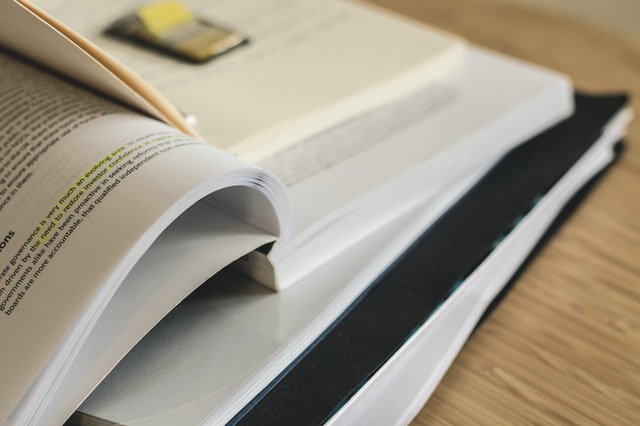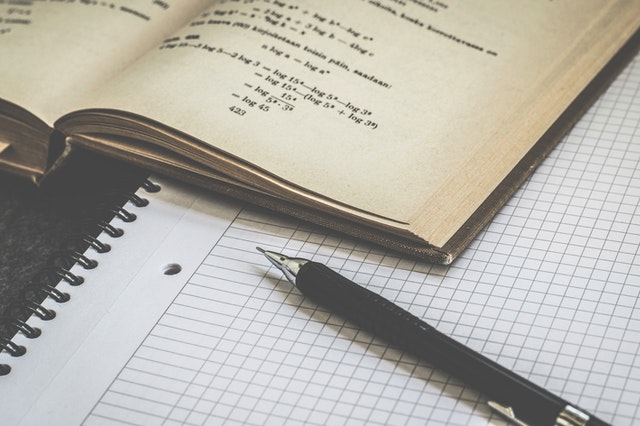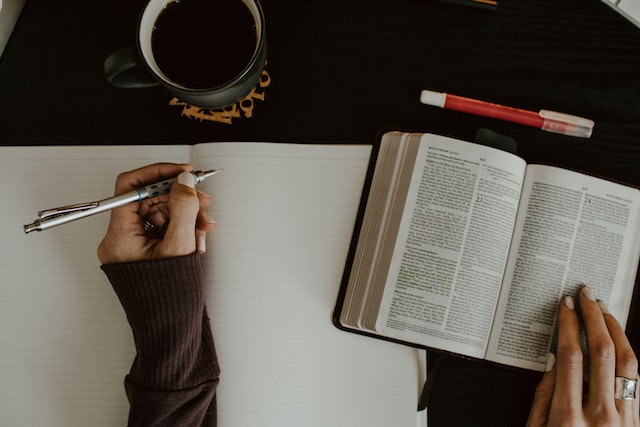The GED exam consists of 4 subjects, broken into separate exams: Reasoning Through Language Arts, Mathematical Reasoning, Social Studies, and Science. You don’t have to take all four exams at the same time; you can space them out and take them at your convenience.
You’ll learn about the GED reading portion of the test and get some sample questions in our GED reading practice test in this article.
Take our free GED Practice Test to get a personalized idea of where you are currently and what you need to study.
GED Reasoning Through Language Arts Test
Your reading and writing skills are assessed on the Reasoning Through Language Arts (RLA) test. Both of these skills are based on communication, which you’ve probably done a lot of throughout your life.
You’ll take the GED Reasoning Through Language Arts test all at once because it’s a reading and writing test. There will be one 10-minute break.
- You’ll take the test at a testing center on a computer.
- It takes 150 minutes, or 2 hours and 30 minutes, to complete the test.
- There are approximately 50 questions and one essay.
- The test is scored on a scale of 100 to 200 points.
- To pass the test, you’ll need 145. (In New Jersey, 150 is required.)
Part I: Reading, Writing, and Essay
- You will have 3 minutes to read the instructions.
- The first part lasts 72 minutes.
- Part I will consist of a set of questions and an essay or extended answer.
- You will have a 10-minute break after Part I.
Part II: Reading and Writing
- Part II lasts 65 minutes.
- In Part II, you’ll answer most of the multiple-choice, drop-down, and drag-and-drop questions.
GED Reading Test Details

- Expect approximately 40 reading questions and 5 or 6 passages.
- Expect 1–2 literary passages and 4–5 science, social studies, or workplace passages.
- Expect 6-8 questions per passage.
- Part I (before the break) and Part II could both have reading questions (after the break).
- Most questions are multiple-choice.
- Some of the questions are drag-and-drop.
The GED Reading Test makes up around 80% of the test and includes the following topics:
- 35% Reading for Meaning
- In what order do things happen?
- What inferences can you make from what you’ve read?
- What are the relationships between ideas, events, and people?
- What are the details, and why are they crucial?
- What is the author’s purpose or point of view?
- What words and phrases does the author use?
- What is the text’s structure, and why is it organized the way it is?
- What are the similarities and differences between the two passages?
- 45% Identifying and Creating Arguments (Including reading questions plus the essay.)
- What are the details and proof?
- What is the main point?
- What conclusions or inferences can you make from the author’s words?
- How details are used to reinforce the main idea?
- What is the quality of the evidence or support for an idea?
- What are the similarities and differences between the two arguments?
- The remaining 20% of the test is made up of writing!
- There are 25% literary texts and 75% informational texts in the passages.
- They range from 400 to 900 words.
- They cover science, social studies, stories, and work texts.
- Each passage is followed by 6 to 8 questions.
You will have to demonstrate that you can read and comprehend both literary and informational texts. Your reading skills need to be on par with what is needed to successfully attend college-level coursework, as well as to enter the workforce and have a successful career.
This means that your reading skills must be on par with those of graduating high school seniors. Because the GED diploma is a reliable high school equivalency (HSE) credential, your reading capabilities need to be at that level as well.
The level to which you are able to understand what the author is telling you is determined by your reading comprehension skills. Both the GED Science subtest and the GED Language (RLA) subtest assess your reading comprehension skills.
Reading comprehension is more difficult than verbal comprehension since you can ask for clarification if you don’t understand what someone is saying. When you’re reading a passage, though, the author is usually not present to answer any questions. It’s crucial to take the GED reading comprehension practice test to pass it with ease.
As a result, you’ll have to answer questions regarding the passages on the GED Reading passages. It’s fine if you can’t find the correct term or if you have minor issues with normal English grammar. This section of the test will be unaffected by something like this. All you have to do now is read the text and find out what the author is saying and what’s going on.
Let’s start practicing for your GED reading test with our free GED Language Arts Practice Test
Benefits of Taking GED Language Arts Reading Practice Test

Once you think you understand the basics of what you need to know to pass the GED Reading section, you should really drill down further your knowledge and take many GED English reading practice tests available for free on this website.
Starting with a good practice test is a great idea! You can learn about the types of questions that will appear on the GED exam and what you should study. For the GED Reading Practice Test, you can take free online practice tests.
Remember that practice makes perfect? So, in order to be ready for the GED Reading section, you should take as many practice tests as you can, as this will also familiarize you with the GED testing format.
Through the Language Arts subtest, you’ll get familiar with this section of the GED Reasoning’s key concepts. Taking many practice exams can help you get familiar with all of the concepts you’ll be tested on.
These key concepts have to do with understanding, identifying, and summarizing the text’s main idea, as well as recognizing the supporting elements.
You must demonstrate that you can form correct inferences from the offered details and identify the details that support the passage’s theme or main concept. You’ll also have to show that you can make hypotheses and/or generalizations based on the details of the passage.
You’ll also have to know how a passage’s structure works, how paragraphs, sentences, and the entire text are connected, and how they all contribute to the passage’s main idea’s development.
Read more: GED Language Arts Study Guide
FREE GED Reading Practice Tests

Our free GED practice test comprises questions that are categorized based on the actual GED test framework as outlined above and are scored promptly at the end of the quiz. We are constantly working to improve the quality and quantity of our GED practice test questions in order to make them as close to the real test as possible.
After you’ve completed the quiz, you’ll be given a score report with a thorough explanation and reason for each question you answered incorrectly, which helps you understand the fundamental causes of difficulties so you don’t make the same mistake twice and pass the test the first time! We’re glad to say that our free GED Reading practice test 2022, which is one of the best platforms for practicing, has assisted many participants in passing the test with ease!
Read the supporting details then answer the following question
1. Geocaching is an outdoor treasure hunt using hand-held Global Positioning System units. The geocachers hide and seek “treasures,” which are found in waterproof containers and typically include a pencil, a small notebook to serve as a logbook for finders, and several trinkets like key chains, and small toys, and buttons. Geocaches can range in size from a small film canister to bigger than a 5-gallon bucket.
Geocachers hide the geocache and enter coordinates on a website. Others download the coordinates, enter them into a GPS unit and hunt for the geocache.
Once the cache is found, the finders enter their names and date into the logbook in the cache. The finders can then take an object from the cache while leaving something of equal or higher value. The finders replace the geocache in the same place where they found it for future geocachers to find.
Which of the following options identifies the purpose behind geocaching?
- To hide and seek treasures
- To learn how to use a GPS
- To obtain some exercise
- To learn how to log your actions
2. (1) Because of the number of requests for changes in the dress code, Northern Lights is making an effort to compromise between fashion and safety for its employees. (2) However, the employees will still need to be concerned about the consequences of not following the new dress code. (3) When the dress code demands a certain attire to be worn. (4) But how do you know what to wear?
(5) Read the updated dress code policy before you make changes to your wardrobe. (6) Then, talk with your supervisor or other coworkers to verify that you understand the appropriate attire that needs to be worn. (7) Staying within the guidelines of the dress code policy will help prevent you from receiving verbal and written reprimands. (8) If you should determine that the policy does not affect you, you may be shocked to find that it does.
(9) The decision to take the dress code policy seriously is the first order of business. (10) Start by reading the new dress code policy, so that you understand them. (11) Mindfulness compliance and acceptance of the new dress code will be beneficial for Northern Lights and its employees. (12) You will soon notice a more fashionable, yet appropriate, workgroup around you.
Sentence 11: Mindfulness compliance and acceptance of the new dress code will be beneficial for Northern Lights and its employees.
Which of the following changes should be made to correct sentence 11?
- Insert a comma after “Mindfulness”
- Replace “its” with “it’s”
- Change “will be” to “would be”
- Change “for the” top “of the”
3. Igloos are built-in fields of hard, packed snow. They’re made of snow blocks cut from snow well beneath the soft, dry layers on the ground surface. Igloos shouldn’t be more than 10 feet in diameter; otherwise, you need a perfect dome for structural integrity and heat retention. Large blocks are cut to construct the bottom of the igloo, and smaller ones make up the top. Bricks are layered in a spiral pattern along the igloo’s perimeter, placed at a slight slant to create a dome.
The blocks support one another so they don’t fall in. Blocks are smoothed together, and piled-up snow is removed from the dome as it’s being built. A hole is dug at the entrance, and blocks are piled over it, forming a tunnel entrance. The inside of the dome is smoothed well using gloved hands so moisture drips down its sides instead of from the roof.
Traditional igloo houses have beds made from snow covered in twigs and animal skins. Modern igloos may have the floor covered with camping mattresses. The tenant may cut a niche in the inside to place a candle, cookware, or supplies. Entrances are kept open for ventilation purposes, but animal skins or blankets may be placed as a door flap to keep warmth in.
It can be inferred from this passage that igloos should be:
- Built-in the mountains
- Insulated with animal skins
- Used for ice-fishing huts
- Constructed in cold climates
4. “Eighty-Eight” by Nicholas Gordan
Eighty-eight spend much of their life in bed,
Interred beyond her time in drugs and pain.
Grateful only for the gift of sleep,
Having lost the will to laugh or weep,
The shrunken doll repeats just one refrain,
Yearning for the comforts of the dead.
Even so, the trail of pills has led
Into a world, she grapples with in vain,
Grasping for a grace she cannot keep,
Harsh and vivid hauntings of the brain
That makes life a stew of joy and dread.
Which of the following best describes the poem’s subject?
- Energetic
- Blessed
- Irked
- Ailing
5. (1) I am a long-time resident of our city, and I am writing to express my concern about the recent discussion and the pending decision to remove the trees along the Main Street corridor. (2) I understand that the decision is being considered to enable street widening that will accommodate increasingly heavier traffic.
(3) However, I do not believe that the benefits of widening the main street for more traffic compare favorably to the benefits of keeping the trees. (4) Consider: Trees make for a more natural, less artificial, and therefore less stressful, environment. (5) The sight and sound of traffic, on the other hand, are not pleasant and can leave us feeling more stressed. (6) Furthermore it is well known that trees improve air quality; leaves filter the air we breathe, absorb pollution, and give off oxygen. (7) It’s also well known that traffic gives off myriad pollutants that decrease air quality.
(8) It would seem that widening our roads would bring increased growth, and thus a better economy to our city. (9) However, consider that trees bring energy savings by moderating heat in commercial areas and that landscaping with trees increases property values. (10) Traffic, on the other hand, will increase energy costs by increasing temperatures and air pollution and will decrease surrounding property values.
Sentence 3: However, I do not believe that the benefits of widening the main street for more traffic compare favorably to the benefits of keeping the trees.
Which of the following changes should be made to correct sentence 3?
- Change “compare” to “compares”
- Change “that” to “which”
- Change “main street” to “Main Street”
- Change “benefits” to “benefit”
Answer & Explanation
1. Answer: A
Explanation: The purpose behind geocaching is to hide and seek treasures, which is identified in the second sentence of the passage. During the act of geocaching, the geocachers will learn how to use a GPS, they will obtain some exercise, and they will learn how to log their findings, but those actions are not the purpose behind geocaching.
2. Answer: A
Explanation: In order to correct sentence 11, you should insert a comma after “Mindfulness.” Commas are used between items in a series. In this question, “mindfulness” and “compliance” are both parts of a series that needs to be separated with the use of a comma. The other answer options are not options that would make the sentence grammatically correct.
3. Answer: D
Explanation:
From the passage, you can infer that igloos should be constructed in cold climates. Igloos are made from snow blocks; therefore, you can determine that igloos would only last in climates that were cold. Igloos could be used for ice-fishing huts, but the passage does not indicate that they are used for fishing purposes. Igloos could be built in the mountains, but the passage does not mention or indicate that igloos should be built in the mountains. The passage states that animal skins are used for bedding or as a door covering, but it does not imply that they are used to insulate an igloo.
4. Answer: D
Explanation: The poem is about an eighty-eight-year-old woman who is bedridden and in much pain; therefore, you can infer that the woman’s health is ailing. The poem does not indicate that the woman feels blessed or energetic, as she yearns for death and is in a lot of pain. You may have thought that the woman was irked, or upset, but the poem does not imply that the woman is mad.
5. Answer: C
Explanation: In order to correct sentence 3, you would need to change “main street” to “Main Street.” The names of streets, roads, and highways are capitalized; therefore, “Main Street” should be capitalized. The other answer options are not options that would make the sentence grammatically correct.
FAQs
Final Words
The GED RLA Reading section isn’t particularly complicated or too difficult, but you must be able to identify the plot, theme, and characters of a passage and comprehend its meaning.
With some good preparation and a proper GED Reading practice test, you can get the abilities you need to do well on the GED Reasoning through the Language Arts subtest’s Reading section.
Eligibility Requirements For GED In District of Columbia
November 25, 2022

Eligibility Requirements For GED In New York
November 25, 2022

Eligibility Requirements For GED In Wyoming
You may learn more about how to obtain a GED in Wyoming by reading the answers to the questions related to GED requirements in Wyoming we receive below.
September 19, 2022
